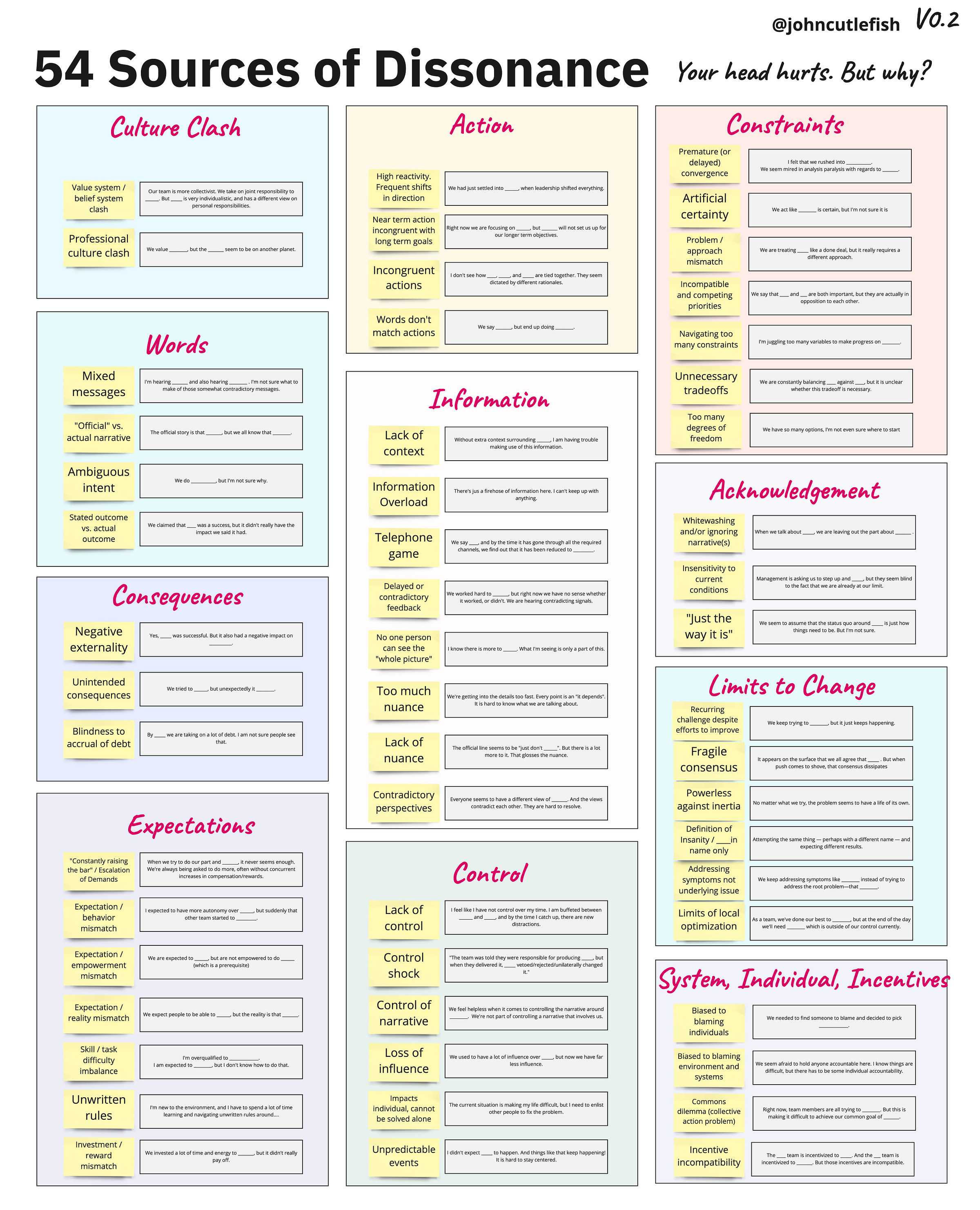In my experience, people are generally good at sensing dissonance. They may not know the exact cause of that dissonance—and they might not actually care—but they sense something isn't adding up.
Some examples
A leader makes a statement to her team. The statement is 90% truth, and 10% success theater. There's a delta between the official story, and reality. People sense that. For some people that's fine. For others, it causes real discomfort.
A manager escalates demands on a team without recognizing the added burden. The delta between expectations and capacity (and acknowledgement) grows. Again, interpretations vary. Some team members relish the challenge. Others, lose trust in the manager.
A new employee keeps bumping into the organization's "unwritten rules". How was she supposed to know? What else does she need to know? How long does she have to learn these rules? Who sets them? Maybe she enjoys this challenge. Maybe she doesn't.
A team lacks enough context to make good decisions. They're juggling too many constraints. They keep "missing the mark" (according to their stakeholders). The feedback is ambiguous, but something obviously isn't adding up. The delta between the information they feel they need to do their job, and the information they have...grows.
People sense these things.
For me, at least, dissonance causes physical tension. I can feel my brain grinding. There's energy spinning. Sometimes it kicks off my problem solving instinct (fun?). Other times it feels like loss, or fear. I’ve tried to get better at getting in touch with what it feels like.
Not all dissonance is equal. Some sources of dissonance feel acute. We expect something to happen. It doesn't happen. The tension builds and then releases once we figure out what went wrong. Other sources of dissonance feel chronic. There's no shaking the mixed messages, the information asymmetries, or the words/actions mismatches. You either leave (if you have that privilege), accept it, stew on it, or work to shift it.
Besides the chronic/acute distinction, we have:
Compounding Dissonance: as dissonance adds up, it has an impact that is greater than the sum of its parts. For example, dissonance that impacts trust in one area, might cloud the interpretation of a well-meaning, but detail-light communication in another area.
Normalization of Dissonance: when dissonance becomes long-lasting and chronic, it becomes the norm. People adapt to survive/thrive despite the dissonance. They become numb to the impact.
Dissonance Flight (and Survival/Thriving): people who find ways to cope with—or even thrive in—the dissonance stay, and people who can't either check out, or leave.
Dissonance Energy Drain: energy spent counteracting dissonance in day-to-day work, doesn't get used for something else. Dissonance is not free. Even ignoring it takes energy.
Beneficial Dissonance: maybe the tension between X and Y is actually an opportunity to have X and Y. To reframe the problem. To get creative?
Dissonance Blindness / Negative Externalities: a group creates a mess, and passes it on to another group.
Dissonance Currents: In chatting with companies, I often observe a set of dominant dissonance themes that pervade everything. All conversations. All interactions. These aren't "root causes" as much as pervasive currents. Example:
Two founders have different worldviews that are not complimentary, and the mixed messages pervade everything.
The shift in the business landscape pits the core money-maker against longterm survival
An amazing product shifts the lots of appeal shifts the burden to go-to-market teams
The trouble is that you can't take a pill and make worldviews harmonize, competitors disappear, and consumer habits revert to the status quo!
I was thinking about all this, and asked myself:
What if we could make easier, and safer, to talk about dissonance?
What if we could try our best to depersonalize the discussion, and instead focus in on what it FEELS like (minus assuming bad intent) ?
What if leaders saw themselves in the coherence business (the anti-dissonance business)?
As a start, I made this aid to help identify the area of dissonance. It is an early version, for sure. But perhaps you’ll find it helpful. Here’s a PDF if that is easier. Or a Miro board.



